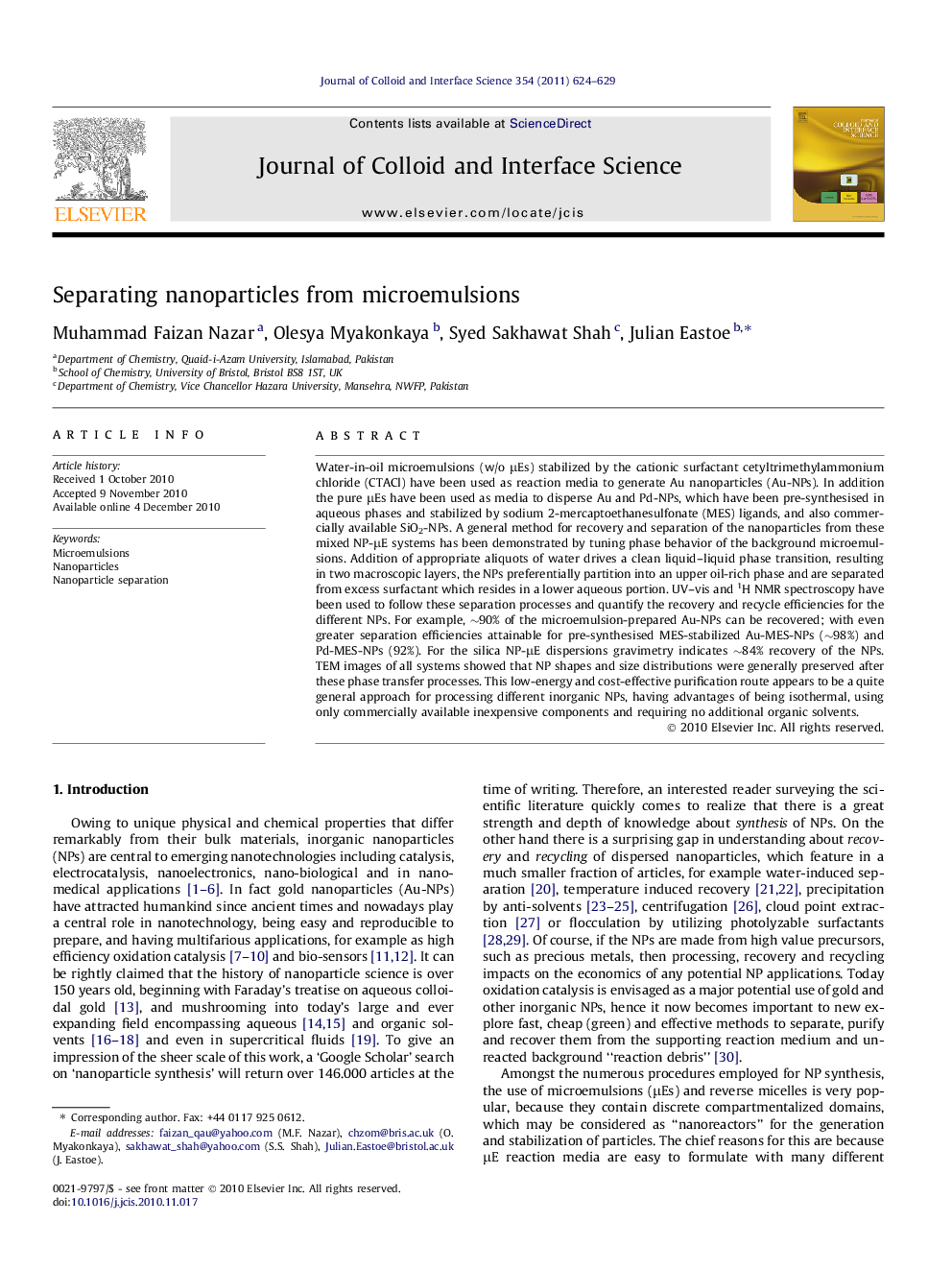| کد مقاله | کد نشریه | سال انتشار | مقاله انگلیسی | نسخه تمام متن |
|---|---|---|---|---|
| 608925 | 880611 | 2011 | 6 صفحه PDF | دانلود رایگان |

Water-in-oil microemulsions (w/o μEs) stabilized by the cationic surfactant cetyltrimethylammonium chloride (CTACl) have been used as reaction media to generate Au nanoparticles (Au-NPs). In addition the pure μEs have been used as media to disperse Au and Pd-NPs, which have been pre-synthesised in aqueous phases and stabilized by sodium 2-mercaptoethanesulfonate (MES) ligands, and also commercially available SiO2-NPs. A general method for recovery and separation of the nanoparticles from these mixed NP-μE systems has been demonstrated by tuning phase behavior of the background microemulsions. Addition of appropriate aliquots of water drives a clean liquid–liquid phase transition, resulting in two macroscopic layers, the NPs preferentially partition into an upper oil-rich phase and are separated from excess surfactant which resides in a lower aqueous portion. UV–vis and 1H NMR spectroscopy have been used to follow these separation processes and quantify the recovery and recycle efficiencies for the different NPs. For example, ∼90% of the microemulsion-prepared Au-NPs can be recovered; with even greater separation efficiencies attainable for pre-synthesised MES-stabilized Au-MES-NPs (∼98%) and Pd-MES-NPs (92%). For the silica NP-μE dispersions gravimetry indicates ∼84% recovery of the NPs. TEM images of all systems showed that NP shapes and size distributions were generally preserved after these phase transfer processes. This low-energy and cost-effective purification route appears to be a quite general approach for processing different inorganic NPs, having advantages of being isothermal, using only commercially available inexpensive components and requiring no additional organic solvents.
Nanoparticles synthesised in water-in-oil microemulsions can be easily separated from the reaction medium by steep dilution with water.Figure optionsDownload high-quality image (73 K)Download as PowerPoint slideResearch highlights
► A low-energy, isothermal, easy to apply and cost-effective purification route for processing inorganic nanoparticles from microemulsions is described.
► A water-induced separation can be used to recover nanoparticles from the reaction medium “at the flick of a switch”.
► This water dilution method appears to be quite general.
Journal: Journal of Colloid and Interface Science - Volume 354, Issue 2, 15 February 2011, Pages 624–629